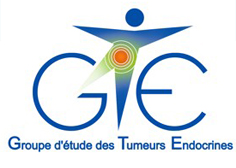SEQTOR
- Type d'étude :
- Phase III
- Promoteur :
- ENETS
- Etat actuel de l'étude :
- Terminée aux inclusions
Randomized open label study to compare the efficacy and safety of everolimus followed by chemotherapy with STZ-5FU upon progression or the reverse sequence, chemotherapy with STZ-5FU followed by everolimus upon progression, in advanced progressive pNETs (SEQTOR study)
SEQTOR
ENETS- GETNE1206 / EudraCT number 2013-000726-66
TNE pancréatique
Interventionnelle : évérolimus post embolisation
Phase III
180 (90 per arm)
P Ruszniewski  Mail Ruszniewski
Mail Ruszniewski
R Salazar
Clichy, Lyon, Bordeaux, Brest, Villejuif, Strasbourg
To compare the efficacy of the combination STZ-5FU chemotherapy followed by Everolimus 10 mg/day upon progression versus the reverse sequence in the treatment of advanced pancreatic neuroendocrine tumours (pNET), in terms of rate of patients with second progression free survival at 84 weeks of treatment, assessed by local investigator using RECIST criteria 1.0.
* Adult patients > 18 years old.
• Histologically proven diagnosis of unresectable or metastatic, advanced pancreatic NET.
• Documented confirmation of pancreatic NET G1 or G2 as per ENETS classification system:
• G1: < 2 mitoses per 2 mm2 and/or Ki-67 index < 2%
• G2: 2–20 mitoses per 2 mm2 and/or Ki-67 index > 2% and < 20%
• Patients from whom a paraffin-embedded primary tumour or metastasis block is available and sent by courier (Section 7.2.10). Patient should give his/her consent for its use in future investigations.
• Before study inclusion, patients must show progressive disease documented by radiology within 12 months prior to study inclusion. If patient received anti-tumour therapy during the past 12 months, he/she must have radiological documentation of progressive disease while on or after receiving that anti-tumour therapy. Naive patients can be also included if, under investigator’s judgement, the patient needs active treatment with either chemotherapy or everolimus.
• Before starting with the second treatment in sequence, patients must show documented disease progression by RECIST 1.0 (local assessment) while on anti-tumour therapy or in case of toxicity caused by the first treatment period.
• ECOG Performance status score 0 – 2.
• Life expectancy > 12 months.
• Presence of measurable disease as per RECIST criteria 1.0, documented by a Triphasic Computed Tomography (CT) scan or multiphase MRI radiological assessment.
• Previous treatment with somatostatin (SS) analogues is allowed. Only those patients with active functioning syndrome at entry can continue with SS analogues during the study.
• Adequate bone marrow function, documented by ANC > 1.5 x 109/L, platelets > 100 x 109/L, haemoglobin > 9 g/dL.
• Adequate liver function documented by: serum bilirubin < 2.0 mg/dL, INR < 2, ALT and AST < 2.5 x ULN (< 5 x ULN in patients with liver metastasis).
• Adequate renal function documented by: serum creatinine < 1.5 x ULN.
• Fasting serum cholesterol < 300 mg/dL or < 7.75 mmol/L and fasting triglycerides < 2.5 x ULN. If one or both thresholds are exceeded, the patient may only be included after starting treatment with an adequate lipid-lowering agent.
• Women with child-bearing potential must have a negative serum pregnancy test within 14 days prior to enrolment and/or a urine pregnancy test 48 hours before the administration of the first study treatment.
• Written Informed Consent obtained according to local regulations.
* Patients with poorly differentiated pancreatic neuroendocrine tumor; this is, pNET G3 as per ENETS classification system:
• G3: 21 or more mitoses per 2 mm2 and/or Ki-67 index >20%
• Previous treatment with chemotherapy and/or mTOR inhibitors (sirolimus, temsirolimus, everolimus, deforolimus) or tirosyne kinase inhibitors (sunitinib, sorafenib, axitinib, pazopanib, regerafenib).
• Immune therapy or radiation therapy within 4 weeks prior to the patient entering the study.
• Hepatic artery embolization within the last 6 months (1 month if there are other sites of measurable disease), or cryoablation/radiofrequency ablation of hepatic metastasis within 2 months of enrolment.
• Previous treatment with Peptide-Receptor Radionuclide Therapy (PRRT) within the last 6 months and/or without progression following PRRT.
• Uncontrolled diabetes mellitus defined as: fasting serum glucose > 1.5 x ULN.
• Patients with any severe and/or uncontrolled medical conditions such as:
• unstable angina pectoris, symptomatic congestive heart failure, myocardial infarction < 6 months prior to randomization, serious uncontrolled cardiac arrhythmia,
• active or uncontrolled severe infection,
• severe hepatic impairment (Child Pugh C) is not allowed; moderate hepatic impairment (Child Pugh B and A) requires a reduced dose of everolimus (5mg and 7.5 mg daily respectively). Positive HBV-DNA and or HBsAg patients at screening should receive prophylaxis treatment.
• severely impaired lung function (spirometry and DLCO 50% or less of normal and O2 saturation 88% or less at rest on room air),
• active, bleeding diathesis
• Treatment with potent inhibitors or inducers of CYP3A isoenzyme (rifabutin, rifampicin, clarithromycin, ketoconazole, itraconazole, voriconazole, ritonavir, telithromycin) within 5 days immediately before the start of treatment (a list of clinically significant drug interactions is shown in section 6. Concomitant Medication).
• Patients on chronic treatment with corticosteroids or any other immunosuppressive agent.
• Patients known to be HIV seropositive.
• Known intolerance or hypersensitivity to everolimus or its excipients or other rapamycin analogues. Patients with rare hereditary problems of galactose intolerance, Lapp lactase deficiency or glucose-galactose malabsorption should not take this medicinal product.
• Known intolerance or hypersensitivity to 5FU or STZ or its excipients.
• Participation in any other clinical trial or concomitant treatment with any other investigational drug.
• No other prior or concurrent malignancy is allowed except for the following: adequately treated basal cell or squamous cell skin cancer, or other adequately treated in situ cancer, or any other cancer from which the patient has been disease free for > 3 years.
• Pregnant, lactating women or fertile adults not using effective birth control methods. If barrier contraceptives are used, these must be continued to be used throughout the trial by both sexes and for up to 8 weeks after the end of treatment.
• For administrative matters (insurance) patients > 95 are not allowed.
